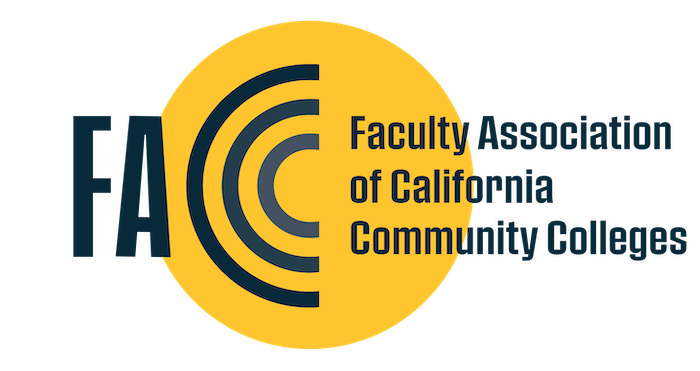AI in the Classroom: A Balanced Look at Opportunities and Challenges
ChatGPT launched just over a year ago and the tool quickly entered the already fierce debates about education technology. Artificial Intelligence (AI) is rapidly advancing into education, but faculty often remain unsure about using it in their classrooms. It's understandable to worry what could happen if AI becomes a permanent part of colleges. Will it replace human connections and weaken teacher roles through increased use of automation? Will tenure track educators be replaced all together? How will bias and data issues be handled? And, who will provide quality control when AI provides incorrect information?
These are just a few of the concerns I’ve heard from FACCC members when discussing the role of AI at colleges. I strongly share this perspective and have positioned FACCC to be proactive in the realm of AI policy as it relates to community colleges and promoting the role of faculty. However, I believe thoughtfully implemented AI could complement faculty, not replace them. It could allow more time for mentoring and individualized support of students. The key is approaching AI primarily as a supplemental teaching support tool, which will require policymakers and administrators to reinvest in teaching and learning while resisting the pressure to consider AI as a cost savings tool. If we stay focused on students and educators while understanding AI's shortcomings and risks, we can carefully evaluate when AI may improve learning and when it should be kept away from the learning process.
Here are some simple examples to support faculty and student learning:
- Include clear, concise AI policies in the syllabus to prevent deliberate and unintentional plagiarism, and provide examples of suitable AI usage. As the music, film, publishing, and other creative sectors wrestle with the repercussions of AI and intellectual property infringement, faculty must understand the intersection of AI and intellectual property rights in education. Since AI utilizes existing data that is someone else's intellectual property, students need to understand appropriate use of AI-aided content. As uncredited use of content by people is plagiarism, uncredited use of AI-created material in coursework is also plagiarism.Syllabi should state when AI use is allowed, prohibited, and requires citation.
- Allow students to use ChatGPT or other similar tools to answer test and essay questions. Subsequently, have students grade and edit the ChatGPT response to correct the errors, misinformation, and missing context. This requires drafting complex questions that AI will have trouble with, but allows for an unique critical thinking exercise that demonstrates the limits of a “turnkey” approach to using AI. While improving AI systems could make this harder over time, for now it's a simple approach allowing thoughtful integration of AI into the classroom.
- A “syllabus chatbot” can help students navigate class expectations and college resources by interactively providing accessible information. Over the years, I’ve heard from student leaders that have worked with faculty to include more information in syllabi. For example, information about basic needs support, student services, voter registration, library hours, campus safety, and, of course, AI policies can be found in many syllabi. A supplementary Q&A chatbot could increase accessibility and student engagement with little additional work. However, quality control is vital to ensure the chatbot is providing accurate information.
Here are some AI benefits that require more investigation and review before being widely used in the classroom, but have potential if used correctly:
- AI can provide individualized learning support to assist faculty in meeting the needs of each student. One of my favorite parts of my job is hearing about how much faculty go above and beyond to help each of their students become successful in their learning journey. But large class sizes make it challenging. AI might help by becoming an individualized, adaptive learning tool tailored to each student. As the course advances, the AI would adapt to the student's progress to provide personalized assistance. This would require a high level of AI competency by faculty, students, and administrative support, but if done properly – with appropriate guidelines and safeguards for addressing bias and privacy – it could supplement the existing student supports and allow faculty, tutors, and counselors to expand their reach.
- Automated grading and metric tracking by AI could help reduce grading workloads.
Of course, AI's probabilistic nature means it may lack human understanding in assessing writing nuances, so automated or even semi-automated grading certainly has constraints. However, if selectively used for some assignments, it could create additional time for personalized student attention, which could benefit educators and students. Again, this would require the appropriate AI tools and sufficient competency by those using and evaluating them.
My hope is these examples will have educators thinking about how to leverage AI in a way that allows them to focus their attention on what they do best: teaching students. While understandable to resist AI, each semester more students will use AI tools proficiently, and monthly AI advancements will require educators and college leaders to keep pace. AI may become ubiquitous in education in the near future, or it might not. Not even AI can predict the future. However, I can confidently predict that the most important variable in learning will always be the teacher, and human educators must stay integral to learning, as humans possess the creativity, social-emotional skills, empathy, wisdom, morality and passion that can never be matched by artificial intelligence.
The future of education will involve both human teachers and AI support, so let us shape how that future unfolds.
